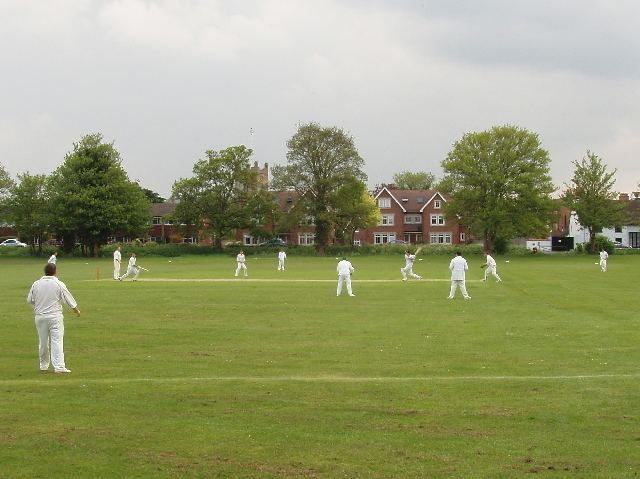 | ||
In cricket, to score a run, a striker must hit the ball and run to the opposite end of the pitch, while his non-striking partner runs to his end. Both runners must touch the ground behind the popping crease with either his bat or his body to register a run. If the striker hits the ball well enough, the batsmen may double back to score two or more runs. At times, four or more runs may be scored off a single ball in this fashion. This is known as running between wickets. However, if a fielder knocks the bails off the stumps with the ball while no batsman is grounded behind the nearest popping crease; the nearest batsman is run-out. (See: Dismissal of a Batsman for more details.) The batsmen will elect to run only when they believe they have a good chance of scoring runs without getting out in this fashion. If the striker hits the ball to a nearby fielder, the batsmen may simply choose not to run.
Contents
If the batsman hits the ball such that the fielders fail to stop it reaching the boundary of the field, four runs are credited to him immediately, irrespective of the number of times he ran between the wickets. If the ball flies directly over the boundary without touching the ground inside the field, then the batsman scores six runs instead of four.
Runs are credited to a batsman if he hits the ball with his bat, or with a gloved hand holding the bat. Runs may also be accrued directly to the team's score through extras and penalty runs.
Other than the cases of an LBW, bowled and stumped, a batsman cannot be penalised for failing to hit the ball. Runs scored by the batsman off the bat, or the gloved hand holding the bat. These runs are recorded to the batsman's personal tally.
Scoring off extras
See also: Extra
All extras are credited to the team total, rather than an individual batsmen. They are also referred to as sundries.
No ball
If a batsman hits a ball which is called a no ball by an umpire, runs scored off it are credited to the batsman just like any other shot. However he cannot be out caught, bowled, stumped, LBW or hit-wicket to a no-ball. One extra run is directly credited to the team.
Leg bye
If the batsman attempts to hit (or to avoid being hit by) the ball, but the ball instead strikes the body of the batsman, the batsman may scamper off for a run if he deems it is possible. Run outs are the only possible conventional dismissal applicable in this case (batsmen may also be dismissed Obstructing the Field or Handled the Ball, but such cases are very rare). If the umpire rules that runs were not able to be scored (because there was no such attempt), he will call "dead ball" and send the batsmen back to their original end. Leg byes are credited to the team.
Bye
If the batsman fails to hit the ball, the batsman may scamper off for a run if the ball is at a considerable distance from an opposing player, enabling him to reach the other end. As in the case of a leg bye, a run out is the only conventional dismissal in this case. Byes are credited to the team, not the batsman.
Wide
In the case of a wide, one run is automatically added to the batting team's total. The batsman might try and score additional runs, which are then recorded as additional wides. Unlike in the case of byes and leg byes, a batsman may also be stumped from a wide delivery; bowlers in Limited Overs games may intentionally concede one run in an attempt to gain such a dismissal.
Mixed scenarios
In the case of a wide, in the event of the wicket keeper and fielders being unable to prevent the ball from going to the boundary, four additional "wides" are added to the team's score, making a total of five.
Penalty runs
In the event of the fielder catching the ball with a helmet or clothing, 5 runs are awarded to the batting side. If the ball strikes a fielder's helmet (or any other equipment, such as shin guards or a drink bottle) lying vacant on the field, the same penalty is imposed.
Overthrows
In the event of the ball not being collected by a fielder in the centre, having been thrown in from the outfield, the batsmen may continue to run. Such runs are called overthrows. They usually occur when a fielder aims unsuccessfully at the stumps in an attempt to run out a batsman, although sometimes they are due to handling errors by the fielder receiving the ball.
One short
To register a run, a batsman must touch the region beyond the popping creases either with his bat or body. If he touches the part before or on the popping crease and turns back for an additional run, the umpire calls out one-short and that particular run is struck out from the records and the batsman which is on the crease of bat side will bat.
